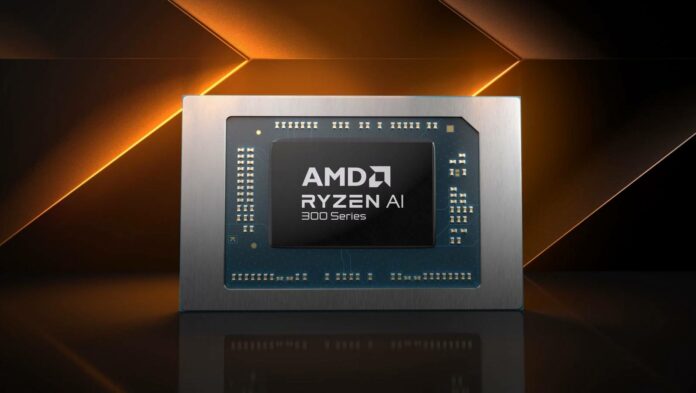The first benchmark results of AMD Zen 5 architecture are promising, as the claimed IPC (instructions per cycle) gains seem correct. Desktop variants are said to be more performant than their monolithic mobile counterparts.
According to David Huang, who managed to get their hands on a laptop powered by the upcoming Ryzen AI 300 Series processor, AMD’s claims weren’t far from the benchmark results. As showcased on Huang’s blog, the processor in question was a Ryzen AI 9 365 packing four Zen 5 cores clocking up to 5Ghz alongside six Zen 5c cores at 4GHz. When passed through the Geekbench 5 test, the CPU netted from 17% to 18% IPC uplift over Zen 4, which is on the ballpark of AMD’s announced 16%. These figures are further enhanced when loading all threads, netting 67% IPC gain in the multi-core test.
Geekbench 6, on the other hand, showed slightly less improvement, with a 15% to 17% single-core IPC increase and 51% multi-core. In the SPEC CPU 2017 test suite, Ryzen AI 9 365 delivered around a 10% IPC uplift compared to Zen 4. However, keep in mind that AMD’s CPUs usually have some weaknesses in some of these tests.
Since Huang conducted these tests on a non-retail engineering sample using 32GB of LPDDR5x-7500 RAM, AMD and the laptop manufacturer can make further optimisations ahead of release.
Huang has also noticed that this Zen 5 Strix Point chip handled branch processing much better than Zen 4 while delivering better read performance from the L2 cache. However, AMD has increased the latency of 128/256/512bit SSE/AVX/AVX512 SIMD integer addition calculations to 2 cycles, likely to allow the CPU to maintain higher clocks.
Unlike the multi-chiplet approach of Zen 5 desktop variants, the mobile versions (also called Strix Point) are monolithic, housing the CPU, iGPU, and NPU (Nural Processing Unit) on the same silicon piece. Also, unlike their desktop counterparts, mobile Zen 5 cores have to make do with half the L3 cache at 16MB, with Zen 5c getting a smaller 8MB to spread among all six cores.
AMD’s Zen 5 Strix Point seems to be holding its ground even on unfinished machines, giving us hope for final products. We can’t wait to see what this new CPU generation has to offer for both gamers and professionals.
